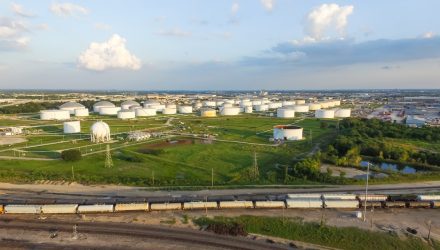Summary
- Several structural factors support growing natural gas demand, including its affordability, reliability, and emissions that are about half that of coal.
- Williams’ Transco natural gas pipeline system offers unique advantages and ongoing growth opportunities with attractive returns.
- Management continues to target 5-7% long-term Adjusted EBITDA growth going forward with dividend growth in line with base business growth.
Last week, Williams’ (WMB) Senior Vice President and Chief Financial Officer John Porter participated in a fireside chat call series co-hosted by Morgan Stanley and VettaFi. The conversation centered on the current golden age for natural gas, which has broad benefits for WMB’s asset base. Mr. Porter also highlighted the company’s solid financial performance over recent years and discussed capital allocation priorities going forward.
Constructive Long-term Outlook for Natural Gas.
Several structural factors support growing natural gas demand, including its affordability, reliability, and emissions that are about half that of coal. Coal-to-gas switching for power generation has accounted for more than half of US emission reductions since 2005, but more progress can be made. There are still 230 coal-fired power plants in the US. Abundant natural gas resources in the US can support coal-to-gas switching domestically and overseas through exports of liquefied natural gas (LNG).
Last year saw a new record for coal power generation globally with Russia’s invasion of Ukraine and spiking energy prices likely supporting greater coal consumption. That said, many countries are reliant on coal, including China, which consumes five times as much coal as the US. A gradual shift away from coal can benefit natural gas. The global LNG market is expected to grow to 90 billion cubic feet per day (Bcf/d) by 2040, which is about 70% growth from 2022. US LNG export capacity is poised to reach over 24 Bcf/d from ~14 Bcf/d based on projects under construction.
Beyond opportunities to replace coal and supply growing LNG markets, Mr. Porter explained how growing deployment of solar and wind power requires more natural gas power capacity for backup purposes. Utility regulators are highly focused on reliability. The reliability (capacity factor) of solar and wind is typically 10-30% compared to 100% reliability for natural gas. Natural gas has an important role to play as power providers grapple with the intermittency of wind and solar.
Transco Remains a Crown Jewel Asset.
Williams’ Transco natural gas pipeline system offers unique advantages and ongoing growth opportunities. Transco extends along the East Coast from Texas to New York with 19.5 Bcf/d of delivery capacity. The pipeline system is fully sold out at maximum tariff rates, which is notable, particularly for a system of this size.
Williams is currently progressing seven growth projects along the Transco system, which will bring delivery capacity to over 21.2 Bcf/d, which represents approximately 20% of Lower 48 natural gas demand in 2022. For expansions, rates are typically negotiated, with recent projects generating returns above 20% compared to typical returns for regulated pipelines of 12.5%. Expansions are often supported by contracts of 15 years or more. Growing US LNG export capacity along the Transco corridor could also create opportunities for the system. Over the last five years, the compound annual growth rate (CAGR) for Transco EBITDA has been a healthy 13%.
Continued Focus on Returns and Capital Allocation Priorities Going Forward.
Williams has provided solid financial performance over the last five years (2018 – 2022). Adjusted EBITDA has grown at a CAGR of 8.5%, while the CAGR for the dividend has been 6%. The average return on invested capital was 17.5% for the five-year period. Management continues to target 5-7% long-term Adjusted EBITDA growth and plans to grow the dividend in line with core business Adjusted EBITDA growth.
From a capital allocation standpoint, the company continues to prioritize maintaining its investment-grade credit rating and a strong balance sheet with leverage of 3.5-4.0x. Next, the company remains committed to its dividend and plans to grow its payout in line with core business Adjusted EBITDA. After the balance sheet and dividend, management is focused on investing in the business through high-return growth opportunities. The capital allocation priorities are rounded out by buybacks and strategic bolt-on acquisitions. WMB has repurchased $130 million in equity this year.
Bottom Line:
Williams has provided solid returns over recent years and continues to target healthy Adjusted EBITDA and dividend growth going forward. Ongoing structural tailwinds for natural gas continue to support growth opportunities for the business.
For more news, information, and analysis, visit the Energy Infrastructure Channel.

